Managing diabetes and weight can be challenging, but GLP-1 receptor agonists have emerged as a promising solution. These medications have gained popularity for their efficacy in regulating blood sugar levels and promoting weight loss.
For individuals in New Jersey seeking effective treatment options, understanding the benefits and differences between various GLP-1 receptor agonists is crucial. This article aims to guide you through the process of finding the best GLP 1DR NJ tailored to your specific needs.
Key Takeaways
- GLP-1 receptor agonists are effective in managing diabetes and weight.
- Various GLP-1 receptor agonists are available, each with unique benefits.
- Understanding the differences between these medications is crucial for making informed decisions.
- Individuals in New Jersey can benefit from these treatment options.
- Consulting a healthcare professional is essential for determining the best GLP 1DR NJ.
Understanding GLP-1 Receptor Agonists (GLP 1DR) in Diabetes and Weight Management
Understanding the role of GLP-1 receptor agonists is key to appreciating their impact on diabetes care and weight control. GLP-1 receptor agonists, or GLP 1DR, are a class of medications that have been making significant strides in the management of type 2 diabetes and are now being recognized for their potential in weight management.

What Are GLP-1 Receptor Agonists?
GLP-1 receptor agonists mimic the action of the naturally occurring hormone GLP-1, which plays a crucial role in regulating blood sugar levels, appetite, and satiety. By activating GLP-1 receptors, these medications enhance glucose-dependent insulin secretion, suppress glucagon release, and slow gastric emptying. This multifaceted approach not only improves glycemic control but also aids in weight loss by reducing appetite and increasing feelings of fullness.
Key benefits of GLP 1DR medications include:
- Improved glycemic control
- Weight loss assistance
- Potential cardiovascular benefits
The Growing Popularity of GLP 1DR Medications
The popularity of GLP 1DR medications is on the rise due to their effectiveness in managing type 2 diabetes and their additional benefits for weight loss. As research continues to uncover the full potential of these medications, their use is becoming more widespread among healthcare providers and patients alike. In New Jersey, the availability of various GLP 1DR options is making it easier for patients to find a treatment that suits their needs.
The growing popularity of GLP 1DR NJ treatments underscores the importance of understanding these medications and their benefits. As more patients and healthcare providers become aware of the advantages of GLP-1 receptor agonists, their use is likely to continue growing.
Top GLP 1DR NJ Options Available for Patients
For patients in New Jersey, understanding the different GLP 1DR options is essential for making informed decisions about their care. GLP-1 receptor agonists have revolutionized the management of diabetes and weight loss, offering a range of medications tailored to individual patient needs.
Semaglutide (Ozempic, Wegovy)
Overview
Semaglutide is a widely used GLP-1 receptor agonist available under different brand names for diabetes (Ozempic) and weight management (Wegovy). It is administered via injection once a week.
Pros
Significant weight loss and improved glycemic control are among the benefits of semaglutide. It has also shown cardiovascular benefits in clinical trials.
Cons
Common side effects include nausea and vomiting, and it may have a higher risk of pancreatitis compared to some other GLP-1 receptor agonists.
Features
Semaglutide has a flexible dosing schedule that can be adjusted based on patient response and tolerance. It is available in pre-filled pens for ease of use.
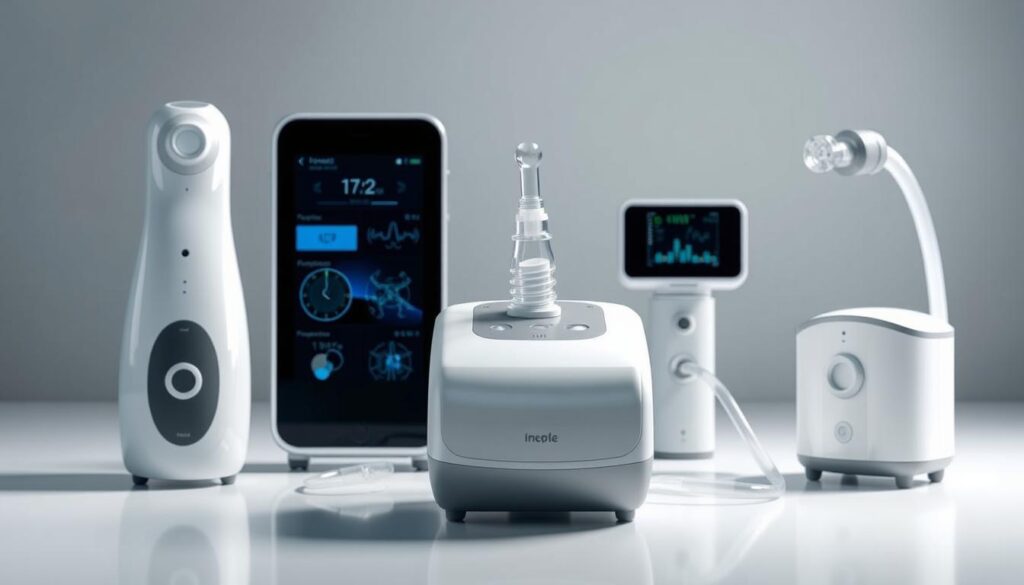
Liraglutide (Victoza, Saxenda)
Overview
Liraglutide is another GLP-1 receptor agonist used for both diabetes management (Victoza) and weight loss (Saxenda). It is administered daily via injection.
Pros
Liraglutide has been shown to provide effective weight loss and improve cardiovascular risk factors. It is also used for pediatric patients with type 2 diabetes.
Cons
The daily dosing schedule can be a drawback for some patients, and it may cause gastrointestinal side effects.
Features
Liraglutide is available in pre-filled pens with a fine needle, making injections relatively painless. It has a well-established safety profile.
Dulaglutide (Trulicity)
Overview
Dulaglutide is a once-weekly GLP-1 receptor agonist used primarily for type 2 diabetes management.
Pros
It offers convenient once-weekly dosing and has been associated with reduced major adverse cardiovascular events.
Cons
Dulaglutide may cause gastrointestinal side effects, and its impact on weight is generally less pronounced compared to semaglutide.
Features
Dulaglutide is available in a single-dose pen or pre-filled syringe, making it easy to administer.
Tirzepatide (Mounjaro)
Overview
Tirzepatide is a novel dual GIP/GLP-1 receptor agonist used for type 2 diabetes management. It is administered via injection once a week.
Pros
Tirzepatide has shown superior glycemic control compared to some other GLP-1 receptor agonists and significant weight loss.
Cons
It may have a higher risk of gastrointestinal side effects, and its long-term safety profile is still being studied.
Features
Tirzepatide represents a new class of diabetes medications with a unique mechanism of action, offering hope for improved outcomes.
| Medication | Dosing Frequency | Primary Use | Notable Benefits |
|---|---|---|---|
| Semaglutide (Ozempic, Wegovy) | Once weekly | Diabetes and weight loss | Significant weight loss, cardiovascular benefits |
| Liraglutide (Victoza, Saxenda) | Daily | Diabetes and weight loss | Effective weight loss, cardiovascular benefits |
| Dulaglutide (Trulicity) | Once weekly | Diabetes management | Convenient dosing, cardiovascular benefits |
| Tirzepatide (Mounjaro) | Once weekly | Diabetes management | Superior glycemic control, significant weight loss |
Comprehensive GLP 1DR NJ Formulary Guide
Accessing GLP 1DR medications in New Jersey requires a comprehensive understanding of the available insurance coverage options. Patients must navigate various insurance plans, including Medicare, Medicaid, and private insurance, to affordably access these medications.
Medicare Coverage in New Jersey
For Medicare beneficiaries in New Jersey, GLP 1DR NJ coverage is available under Medicare Part D. Most Medicare Part D plans cover at least one GLP-1 receptor agonist. Patients should review their plan’s formulary to determine the specific medications covered and any associated costs.
Private Insurance Coverage Options
Private insurance plans in New Jersey vary in their coverage of GLP 1DR NJ medications. Some plans may cover certain GLP-1 receptor agonists more comprehensively than others. It’s essential for patients to check their insurance provider’s formulary and understand any out-of-pocket costs associated with their medication.
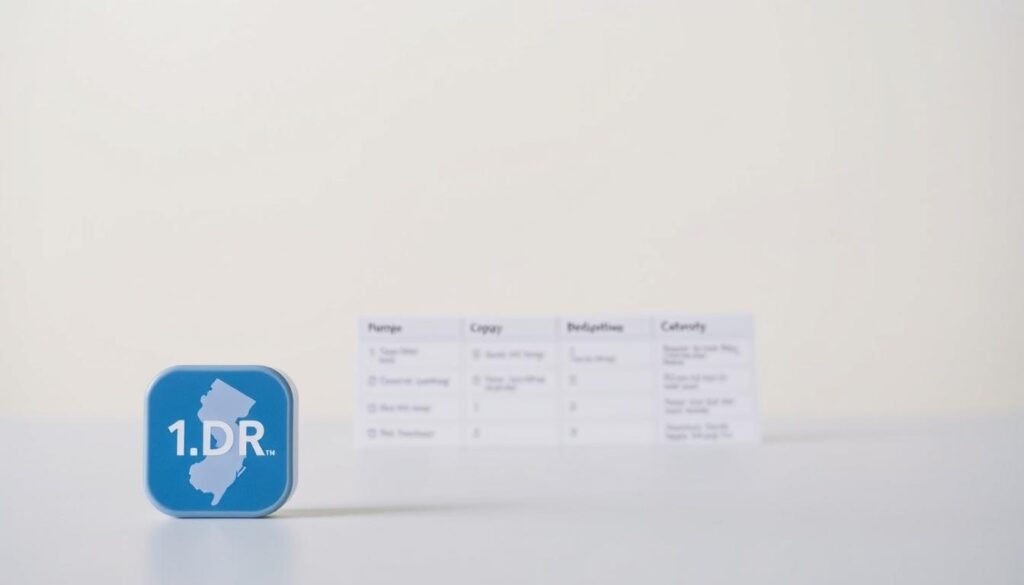
Medicaid Coverage for GLP-1 Medications
Medicaid in New Jersey generally covers GLP-1 receptor agonists for eligible beneficiaries. However, coverage details can vary depending on the specific Medicaid plan. Patients should consult their Medicaid plan documents or contact their provider for specific information on GLP 1DR NJ coverage.
Navigating Formulary Tiers in NJ Health Plans
Understanding formulary tiers is crucial for managing the cost of GLP 1DR NJ medications. Medications are typically categorized into tiers, with lower tiers having lower copays. Patients should be aware of their medication’s tier and explore options for reducing costs, such as generic or biosimilar alternatives if available.
By understanding the complexities of insurance coverage and formulary tiers, patients in New Jersey can more effectively navigate the system to access their prescribed GLP 1DR medications affordably.
GLP 1DR NJ Guidelines: What You Need to Know
New Jersey has established clear guidelines for the prescription and coverage of GLP-1 receptor agonists, which are crucial for patients and healthcare providers to understand. These guidelines impact how these medications are prescribed, covered by insurance, and accessed by patients.
New Jersey State Guidelines for Prescription
The state of New Jersey has specific regulations regarding the prescription of GLP-1 receptor agonists. Healthcare providers must adhere to these guidelines to ensure that patients receive appropriate care. The guidelines cover aspects such as patient eligibility, dosage recommendations, and monitoring requirements.
Healthcare Provider Requirements
Healthcare providers in New Jersey must meet certain requirements to prescribe GLP-1 receptor agonists. These requirements include having the necessary qualifications, completing required training, and staying up-to-date with the latest clinical guidelines. Providers must also ensure that they are following the state’s regulations regarding the prescription of these medications.
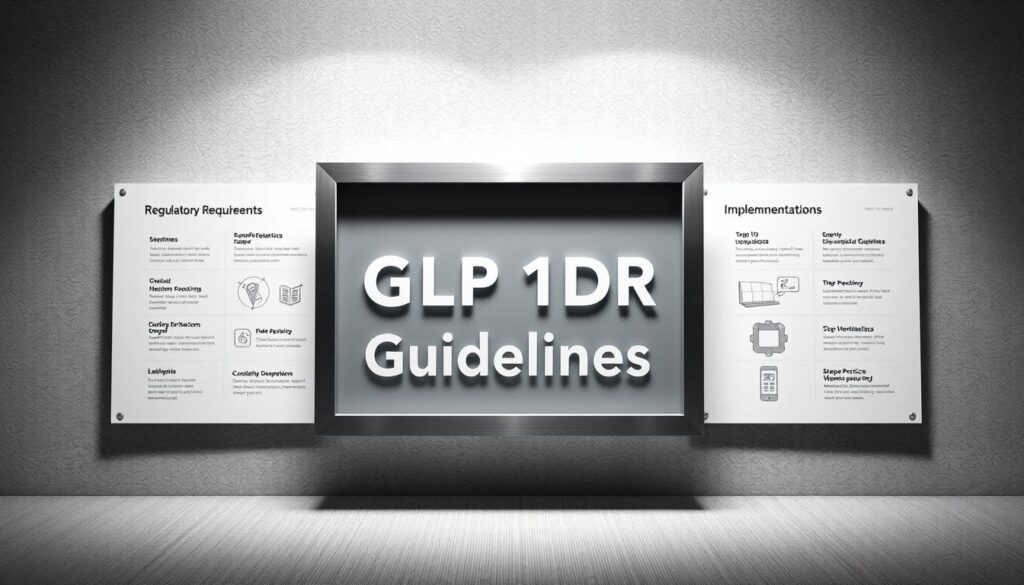
Prior Authorization Process in NJ
The prior authorization process for GLP-1 receptor agonists in New Jersey involves several steps. Healthcare providers must submit a prior authorization request to the patient’s insurance company, providing detailed information about the patient’s condition, the prescribed medication, and the rationale for the treatment. Insurance companies then review these requests to determine coverage.
Step Therapy Requirements
New Jersey has specific step therapy requirements for GLP-1 receptor agonists. Step therapy involves trying alternative treatments before moving to a GLP-1 receptor agonist. Healthcare providers must follow these requirements when prescribing these medications, ensuring that patients have tried the necessary prior treatments before being prescribed a GLP-1 receptor agonist.
Understanding these guidelines is essential for both healthcare providers and patients. By following the state’s regulations and insurance requirements, patients can access the GLP-1 receptor agonists they need to manage their diabetes and weight effectively.
Comparing GLP 1DR NJ Dosage Options
When it comes to GLP 1DR NJ, understanding the various dosage options is crucial for effective treatment. GLP-1 receptor agonists are a class of medications used to manage type 2 diabetes and, in some cases, obesity. The dosage of these medications can vary significantly based on the specific drug, patient factors, and treatment goals.
Starting Doses and Titration Schedules
Different GLP 1DR NJ medications have distinct starting doses and titration schedules. For example, semaglutide (Ozempic) typically starts at 0.25 mg once weekly, while liraglutide (Victoza) begins at 0.6 mg daily. Titration schedules are designed to minimize side effects and optimize efficacy.
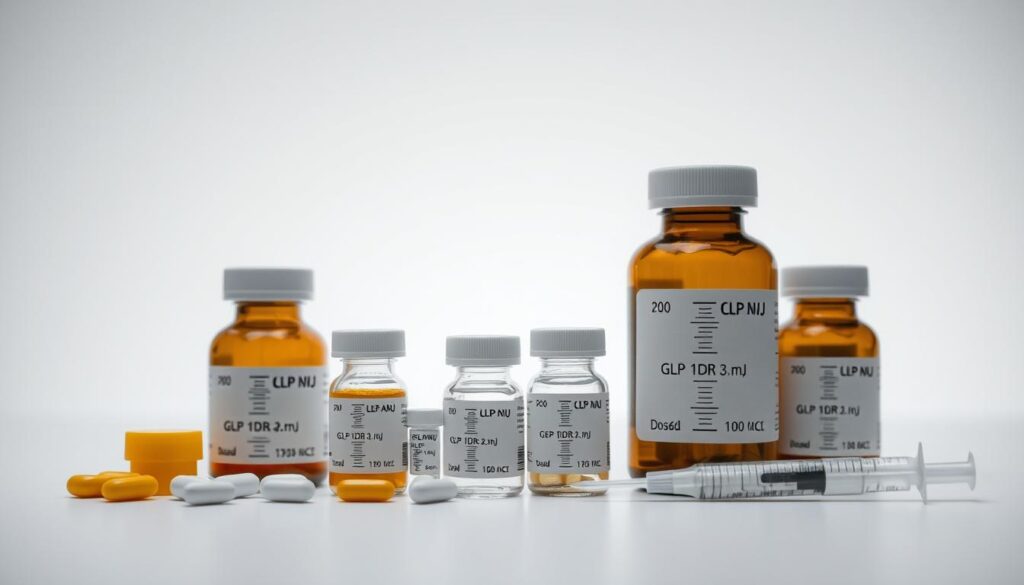
Maintenance Dosing Considerations
Maintenance dosing for GLP 1DR NJ medications is determined based on patient response and tolerability. For instance, the maintenance dose for semaglutide can range from 0.5 mg to 1.0 mg once weekly. Healthcare providers must carefully assess each patient’s needs to determine the optimal maintenance dose.
Dosage Adjustments for Special Populations
Special populations, such as those with renal impairment or elderly patients, may require dosage adjustments. For example, dulaglutide (Trulicity) does not require dose adjustment for renal impairment, making it a potentially safer option for patients with kidney issues.
Monitoring Requirements
Regular monitoring is essential when prescribing GLP 1DR NJ medications. Healthcare providers should monitor patients for signs of gastrointestinal side effects, hypoglycemia, and other potential adverse events. Regular follow-up appointments are crucial to adjust dosages as needed and ensure the medication’s effectiveness.
By understanding the different dosage options for GLP 1DR NJ medications, healthcare providers can tailor treatment plans to individual patient needs, maximizing therapeutic benefits while minimizing potential side effects.
Managing GLP 1DR NJ Side Effects Effectively
Effective management of GLP 1DR NJ side effects is crucial for patients to maximize the benefits of their treatment. While GLP-1 receptor agonists are generally well-tolerated, they can cause a range of side effects, from common gastrointestinal issues to rare but serious adverse events.
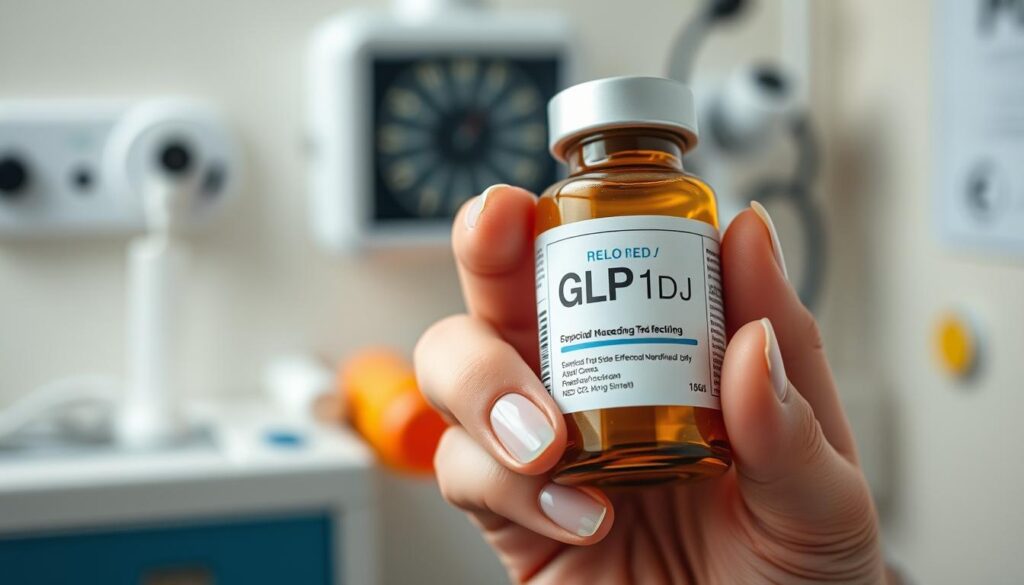
Common Side Effects and Management Strategies
The most common side effects of GLP 1DR NJ medications include nausea, vomiting, diarrhea, and abdominal pain. These side effects are usually mild to moderate and may decrease over time as the body adjusts to the medication.
To manage these side effects, patients can try eating smaller, more frequent meals, avoiding high-fat foods, and staying hydrated. In some cases, anti-nausea medications may be prescribed to help alleviate symptoms.
Rare but Serious Adverse Events
While rare, GLP 1DR NJ medications can cause serious adverse events such as pancreatitis, thyroid C-cell tumors, and acute kidney injury. Patients should be aware of the symptoms of these conditions and seek medical attention immediately if they occur.
Long-term Safety Considerations
Long-term use of GLP 1DR NJ medications has been associated with certain safety concerns, including the potential for increased risk of thyroid cancer and pancreatitis. Regular monitoring by a healthcare provider is essential to mitigate these risks.
When to Contact Your Healthcare Provider
Patients should contact their healthcare provider if they experience any severe or persistent side effects, or if they have concerns about their treatment. Regular check-ups with a healthcare provider can help identify potential issues early and ensure safe and effective treatment.
Potential GLP 1DR NJ Interactions to Be Aware Of
When taking GLP 1DR NJ, it’s essential to be aware of potential interactions that could impact your health. GLP-1 receptor agonists, like other medications, can interact with various substances and medical conditions, affecting their efficacy or safety.
Drug Interactions
GLP 1DR NJ medications can interact with other drugs, potentially altering their effects. For instance, when used with sulfonylureas or insulin, there’s an increased risk of hypoglycemia. According to a study published on PubMed Central, careful dose adjustments and monitoring can mitigate this risk.
Food Interactions
While specific food interactions with GLP 1DR NJ are not as commonly highlighted as drug interactions, maintaining a balanced diet is crucial. Some GLP-1 receptor agonists may slow gastric emptying, potentially affecting the absorption of oral medications taken concomitantly.

Medical Condition Interactions
Patients with certain medical conditions, such as pancreatitis, thyroid disease, or severe gastrointestinal disease, should use GLP 1DR NJ with caution. The medication may exacerbate these conditions or complicate their management.
Alcohol and Supplement Considerations
Alcohol consumption can affect blood sugar levels and may increase the risk of hypoglycemia when used with GLP 1DR NJ. Additionally, certain supplements may interact with GLP-1 receptor agonists, although specific interactions can vary widely depending on the supplement in question.
Being aware of these potential interactions can help patients and healthcare providers manage GLP 1DR NJ treatment more effectively, minimizing risks and maximizing benefits.
Key Benefits of GLP 1DR Medications for New Jersey Patients
For patients in New Jersey, GLP 1DR medications offer a multifaceted approach to managing their condition. These medications have been shown to provide numerous benefits beyond just glycemic control.
Glycemic Control Benefits
GLP 1DR medications are highly effective in improving glycemic control. They work by enhancing the body’s natural response to glucose, thereby reducing HbA1c levels. Improved glycemic control can significantly reduce the risk of diabetes-related complications.
Weight Management Advantages
Many GLP 1DR medications have been associated with significant weight loss, which is a crucial factor in managing type 2 diabetes and improving overall health. This weight loss can lead to better insulin sensitivity and reduced cardiovascular risk factors.
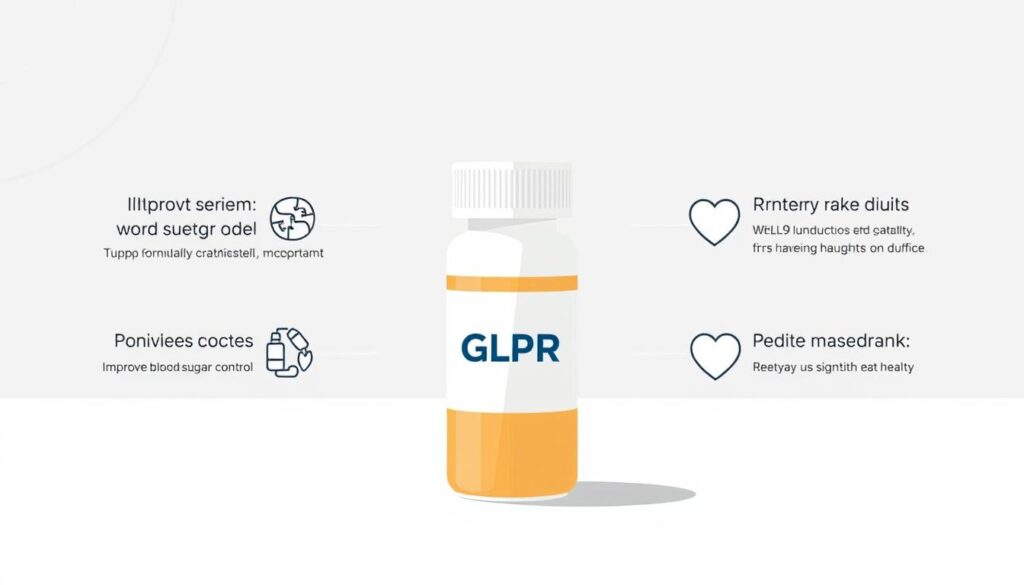
Cardiovascular and Renal Protection
GLP 1DR medications have been shown to offer cardiovascular and renal protection. They can reduce the risk of major adverse cardiovascular events and slow the progression of kidney disease in patients with diabetes.
“The use of GLP-1 receptor agonists has been associated with a reduced risk of cardiovascular events and improved renal outcomes.”
Quality of Life Improvements
By improving glycemic control, facilitating weight loss, and reducing the risk of complications, GLP 1DR medications can significantly enhance the quality of life for patients. Patients often report feeling more energetic and capable of managing their condition more effectively.
In conclusion, GLP 1DR medications provide a comprehensive approach to managing diabetes and related conditions, offering benefits that extend beyond glycemic control to include weight management, cardiovascular and renal protection, and overall quality of life improvements.
Understanding the GLP 1DR NJ Mechanism of Action
GLP 1DR NJ medications mimic the natural GLP-1 hormone in the body, influencing glucose metabolism and appetite regulation. This class of medications has shown significant promise in managing diabetes and obesity.
How These Medications Work in the Body
GLP-1 receptor agonists work by activating the GLP-1 receptors in the body, which are involved in glucose metabolism. They enhance insulin secretion in response to high blood glucose levels and decrease glucagon secretion, thereby lowering blood glucose levels.
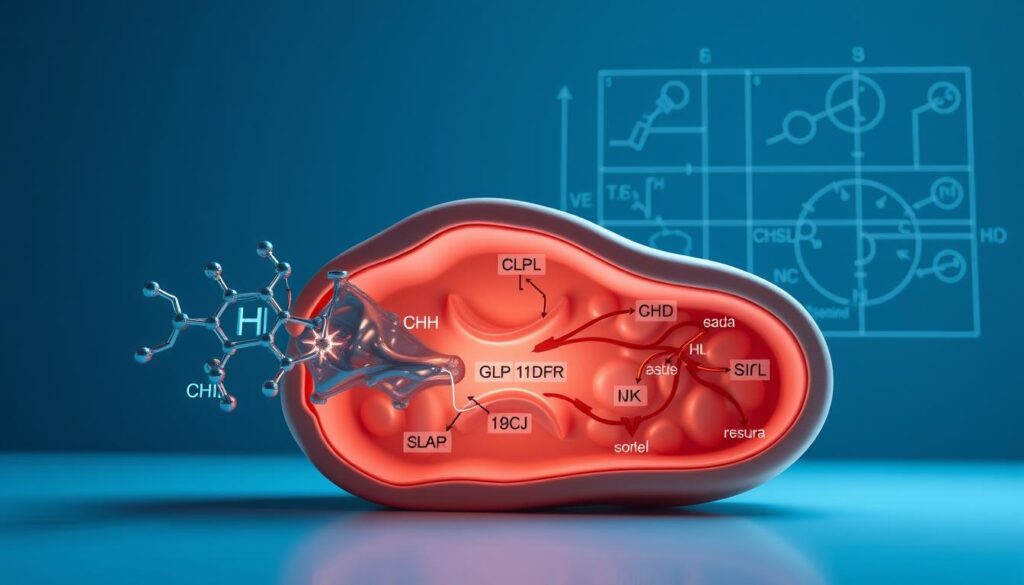
Differences Between GLP-1 Receptor Agonist Types
There are several types of GLP-1 receptor agonists available, including Semaglutide, Liraglutide, and Tirzepatide. For a detailed comparison between Tirzepatide and Semaglutide, patients and healthcare providers can refer to specialized resources. Each has its unique characteristics and benefits.
The Science Behind Their Effectiveness
The effectiveness of GLP 1DR NJ medications can be attributed to their ability to influence multiple physiological pathways. They not only improve glycemic control but also contribute to weight loss and have shown potential in providing cardiovascular benefits.
GLP 1DR NJ Administration Methods Compared
Understanding the different administration methods for GLP 1DR in New Jersey is essential for optimal patient care. GLP-1 receptor agonists are available in various formulations, including injectables and oral forms, each with its own administration considerations.
Injectable Options and Devices
Injectable GLP-1 receptor agonists are a common choice for managing diabetes and weight loss. Devices such as prefilled pens and syringes make administration convenient. For instance, semaglutide (Ozempic) is administered via a prefilled pen, offering a straightforward and relatively painless injection process.
- Easy to use prefilled pens
- Various injection frequencies (weekly, daily)
- Portable and discreet
Oral Formulations
Oral formulations of GLP-1 receptor agonists offer an alternative for patients who prefer not to use injectables. While less common, oral versions like semaglutide (Rybelsus) provide a tablet form that can be taken daily.
- Daily dosing regimen
- No need for injections
- Potential for gastrointestinal side effects
Administration Tips and Best Practices
To maximize the effectiveness of GLP 1DR NJ medications, proper administration is crucial. Patients should be advised on the correct technique for injections, including rotation of injection sites to minimize discomfort.
- Follow the prescribed dosing schedule
- Rotate injection sites
- Store medications according to manufacturer instructions
Storage and Travel Considerations
Proper storage and handling of GLP 1DR medications are vital to maintain their efficacy. Patients should be informed about how to store their medications and how to travel with them.
- Store in the refrigerator (if required)
- Protect from light
- Use travel cases for pens and syringes
By understanding the different administration methods and following best practices, patients in New Jersey can effectively manage their GLP 1DR treatment, improving their overall health outcomes.
New Jersey Resources for GLP 1DR Patients
GLP 1DR patients in New Jersey can benefit from numerous resources designed to enhance their treatment experience. These resources range from support programs and patient assistance to diabetes education and community support groups.
Support Programs and Patient Assistance
Several pharmaceutical companies offer patient assistance programs for GLP 1DR medications, providing financial support and resources to eligible patients. Additionally, non-profit organizations offer support groups and educational materials to help manage diabetes effectively.
Diabetes Education Programs in NJ
New Jersey hosts various diabetes education programs that cater to the needs of GLP 1DR patients. These programs are designed to educate patients on managing their condition, understanding their medication, and making lifestyle changes to improve their overall health.
Finding Specialized Providers in New Jersey
Patients can find specialized healthcare providers in New Jersey who have experience with GLP 1DR medications. These providers can offer personalized care and guidance throughout the treatment journey.
Community Support Groups
Community support groups play a crucial role in providing emotional support and practical advice to GLP 1DR patients. These groups offer a platform for patients to share their experiences and learn from others facing similar challenges.
By leveraging these resources, GLP 1DR patients in New Jersey can better manage their condition and improve their quality of life.
Real Patient Experiences with GLP 1DR in New Jersey
Real-life experiences of patients using GLP 1DR in New Jersey offer valuable insights into the effectiveness of these medications. Patients in the state have been leveraging GLP 1DR treatments to manage their diabetes and weight-related issues, with many reporting significant benefits.
Success Stories and Outcomes
Many patients in New Jersey have achieved remarkable success with GLP 1DR treatments. For instance, some have reported substantial weight loss and improved glycemic control. These positive outcomes have been attributed to the effectiveness of GLP 1DR medications in managing diabetes and obesity.
One patient, who had been struggling with type 2 diabetes, reported a significant reduction in HbA1c levels after starting a GLP 1DR regimen. Another patient praised the medication for helping her lose weight, which had been a persistent challenge.
Challenges and Solutions
While GLP 1DR treatments have been beneficial for many, some patients have faced challenges. Common issues include gastrointestinal side effects and the need for regular injections. However, many patients have found solutions to these challenges, such as adjusting their dosage or using different administration methods.
Healthcare providers in New Jersey have been instrumental in helping patients navigate these challenges. They offer guidance on managing side effects and provide support to ensure that patients can continue their treatment regimens effectively.
Tips from Experienced Patients
Experienced patients offer valuable advice for those just starting GLP 1DR treatments. They emphasize the importance of adhering to the prescribed regimen and communicating openly with healthcare providers about any side effects or concerns.
- Start with a low dose and gradually increase as needed.
- Be aware of potential side effects and report them to your healthcare provider.
- Combine GLP 1DR treatment with a healthy diet and regular exercise for optimal results.
By sharing their experiences, patients in New Jersey are helping others make informed decisions about using GLP 1DR treatments. These real-life stories highlight the potential benefits and challenges associated with these medications, providing a comprehensive view of what to expect.
Conclusion: Finding Your Optimal GLP 1DR Solution in NJ
Finding the right GLP 1DR NJ treatment can be a game-changer for individuals managing diabetes and weight issues in New Jersey. As discussed, various GLP-1 receptor agonists are available, each with unique benefits and administration methods.
Personalized treatment plans are crucial for maximizing the effectiveness of GLP 1DR medications. By understanding the different options, including Semaglutide, Liraglutide, Dulaglutide, and Tirzepatide, patients can work with their healthcare providers to determine the best course of treatment.
It’s essential for patients to consult with their healthcare professionals to discuss their specific needs and health status. This collaboration will help identify the most suitable GLP 1DR NJ solution, ensuring optimal glycemic control, weight management, and overall well-being.
By leveraging the resources and support available in New Jersey, individuals can effectively manage their condition and improve their quality of life. Whether you’re just starting your GLP 1DR journey or looking to optimize your current treatment, a personalized approach is key to achieving your health goals.



